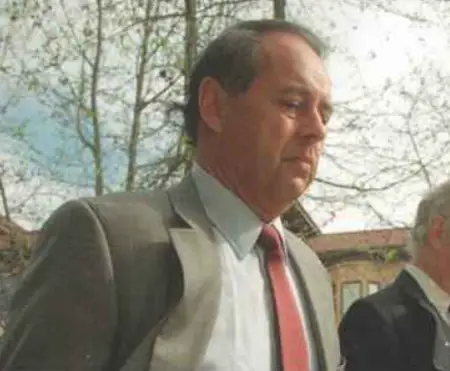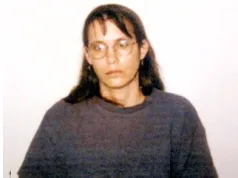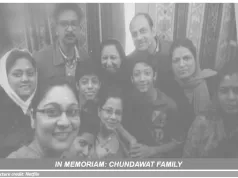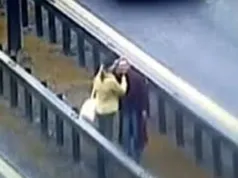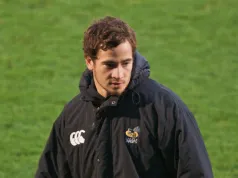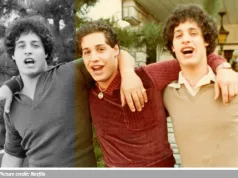The case of Gary Ramona is one of the best-known cases of when a therapist has been ruled to have implanted false memories in a client.
The case was heralded as a landmark moment for those supporting the notion that ‘recovered’ memories could not be trusted. In this article, we look at the case in further detail.

Background
In the late 1980s and early 1990s, scores of people came forward to suggest that they had recovered memories that involved their parents sexually abusing them as a child.
In the vast majority of these cases, the person making the accusations had been partaking in therapy for some form of mental health condition, when they had ‘recovered’ a memory.
Therapists frequently aimed to help a patient uncover traumatic memories, as they felt it may explain the psychiatric distress their patient was going through.
But any treatment method involving recovered memory is highly-controversial. Hypnosis and so-called ‘truth serum’ drugs were among the questionable techniques used.
The huge array of cases that were being made led to intense national attention on the subject. Psychologists were generally split down the middle on their theory as to whether or not an individual could feasibly recover a past memory.
It is a topic which has always been a controversial topic, with no general consensus on its reliability. In fact, this topic is one of the most widely-debated in the entire field of psychology.
Originally, courts largely sides with those making the accusations. However, an organisation called the False Memory Syndrome Foundation was helpful in giving the accused a voice, though this too was a controversial organisation.
The Ramona Family
The Ramona family consisted of the father Gary, his wife Stephanie, and daughter Holly. There were two other daughters too, though they played no role in the case. Unwittingly, the family would become very well-known.
The case started in 1989, when Holly Ramona was attending the University of California, Irvine. Holly developed some mental health problems.
Holly Ramona goes to therapy
During her studies, Holly sought help for an Eating Disorder called Bulimia Nervosa, as well as Depression. She engaged in therapy, being under the care of therapist Marche Isabella.
When attending the first session, Holly, along with mother Stephanie – were told that between 70 and 80% of those with bulimia nervosa were sexually abused as children.
It later transpired that Isabella had limited knowledge of eating disorders – owing to a lack of training.
Over the following months, Holly allegedly began to gradually remember being sexually abused by her father on a number of occasions.
This topic had been focused on by Isabella, who was trying to encourage Holly to remember past abuse. Holly herself questioned whether or not these memories were truthful.
The therapist Isabella opted to administer Sodium Anotal (also known as Amobarbital) – a medication from the sedative, hypnotic and anxiolytic class.
The medicine was seen at the time as a ‘truth serum’, that was capable of making someone tell the truth without conscious thought. It has since been discontinued and is not considered reliable as a medicine to elicit the truth [1].
When under the influence of this drug, Holly retold the same memories that she had previously spoke of. This was also overseen by fellow psychiatrist Richard Rose, who believed Holly was telling the truth.
Holly’s alleged memories stated the abuse began when she was 5, and continued for the rest of her childhood and teenage years.
Gary Ramona’s reaction
At the time, father Gary had a highly-paid job as an executive for Robert Mondavi – a firm revolving around wine – which saw him make around $375,000 a year.
But in March 1990, Gary’s life came crumbling down when Holly confronted her father – accusing him of sexually abusing her in her childhood.
Gary was shocked, and denied any wrongdoing. In the aftermath, Stephanie filed for divorce, and Gary was fired from his job at Robert Mondavi.
His two daughters and his wife stopped speaking to him due to this accusation. Gary Ramona was left with no income, and a broken family.
Ramona Lawsuit
In response to the allegations, Ramona filed a lawsuit against the medical centre where Holly was treated, along with the two therapists, seeking $8million in damages.
Ramona argued that the therapists had implanted false memories into Holly. This was the first time that a court allowed a therapist to be sued for the accusation of implanting false memories.
Gary put together a strong defence team, with the renowned Elizabeth Loftus – who was known for her studies that suggested recovered memories were false – part of the team. Loftus was the key defence witness, and used her extensive history of studying memories to show the jury how easily false memories could be instilled.
An expert in bulimia nervosa – Harrison Pope – told the jury how the condition was not actually influenced by childhood abuse – contradicting one of the main claims of the prosecution. Another expert stated Isabella’s findings were an ‘outrageous misinterpretation”.
On the prosecution, many witnesses defended therapy involving recovered memories, and stated that memories could indeed be recovered after several years.
Holly herself testified about how she had been having flashbacks of instances where her father was touching her inappropriately.
Stephanie aimed to have her stories of alleged domestic violence brought into court, though such information was deemed inadmissible.
Ramona Case Verdict
After both arguments, the jury returned a verdict of 10-2 in favour of Gary Ramona, who was subsequently awarded $500,000 in damages. Ramona’s fees however had totalled almost $1million.
The jury ruled that the therapists had been negligent in how they treated Holly Ramona. Despite this, Holly maintained that her memories were true.
The foreman of the jury – Thomas Dudum – suggested that the jurors didn’t wholeheartedly agree that the accusations were false, and that there had been many unanswered questions. He also suggested the jury didn’t trust Gary Ramona entirely.
What happened to the Ramona family?
Unfortunately for Gary Ramona, his ex-wife Stephanie continued to believe Holly’s accusations, and the two didn’t reconcile.
Holly also continued to believe in the authenticity of her memories, and her two younger sisters also agreed with her. T
he therapist Marche Isabella ended up moving to the state of Virginia, while Richard Rose ended his career in psychiatry.
Holly Ramona ended up completing a masters in psychology, and is believed to have gone on to become a therapist. Holly later filed a lawsuit of her own against her father Gary, but it was dismissed as being groundless.
Impact on the recovered memory debate
The Ramona case was a big moment in the argument of the reliability of recovered memories, with the decision strengthening the case against the use of recovered memories in courts.
Decades later in the present day, cases involving recovered memories are generally not seen as reliable, with an emphasis on supplementary evidence to support the supposedly recovered memory.
Author Moira Johnston heavily researched the Ramona case, and many years later wrote a book on the case. In this book, she heavily criticised the therapists, and lambasted Stephanie Ramona as a ‘trophy wife’.
Ultimately, Johnston agreed with the defence – saying that the recovered memories were not truthful [2].
Summary
Of course, it can never be proved that the abuse didn’t happen – and this is where the problem lies in terms of recovered memory. It is essentially a case of who to believe.
The Ramona family was torn apart following this case, and it will never be known who the true victims were in this case. Its importance in history however cannot be understated.
VISIT OUR RECOVERED MEMORY BLOG
If you have been affected by any of the content in this article, you can see our crisis resources at this link.
Disclaimer
This website should be used purely for informational purposes, and does not intend to, nor should it ever, be used as a replacement for professional medical advice.
We strive to keep all of our pages updated, and ensure that our website is full of factual and in-depth information. However, we encourage you to browse this website with care.
As a reminder, this website and all content within it cannot and should not replace the advice of a trained medical professional. You can read our full disclaimer at this link.
Helplines
If you are struggling with your mental health, help is available. With the right support and treatment, you can make a recovery. For information on helplines, or if you are in a state of crisis, please visit our crisis page by clicking on the relevant link for your geographical location (United Kingdom), (United States), (International). You can also see how to get mental health treatment and the process involved by clicking this link.
References
[1] Stocks, J. (1998). Recovered memory therapy: a dubious practice technique. Social Work. 43 (5), p423-436.
[2] Johnston, M (1997). Spectral Evidence: The Ramona Case: Incest, Memory, and Truth on Trial in Napa Valley. Boston: Houghton Miffin Company.

